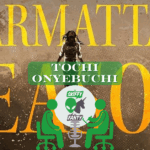One of my favorite stories I’ve read recently is “The Thing About Ghost Stories” by Naomi Kritzer, which appears in Uncanny Magazine. It’s a ghost story about a folklorist who studies ghost stories. If you like ghost stories, classification systems, mother/daughter relationships, or academic scholarship, this is a story for you. “2086” by T.K. Lê, which appeared in Strange Horizons, is another ghost story of sorts. It’s an accessible yet difficult story about immigration, family, and who’s actually valued and wanted within society. I also loved “On the Origin of Specie” by Vajra Chandrasekera, which appears in Nightmare Magazine. It’s a dark, compelling, and claustrophobic examination of taxation, protest, and agency. Lastly, for an intriguing story that blends science fiction with mythology, I recommend you check out “One’s Burden, Again” by Natalia Theodoridou, which appears in Clarkesworld Magazine.

“The Thing About Ghost Stories” by Naomi Kritzer
Leah is an academic, a folklorist who studies ghost stories. She was also the primary caregiver for her mother who suffered from Alzheimer’s. Now that her mother has passed away, Leah can finally take a sabbatical and go do some new research, which for her means sitting in coffee shops and collecting ghost stories to study.
The story is told in the first-person from Leah’s POV, and I found her voice warm and compelling. She’s also just exhausted at times as well, which felt very real and honest. I also appreciated Kritzer’s portrayal of Alzheimer’s and its affect on the mother/daughter relationship.
A good deal of why I loved this story is because Leah goes on several fascinating tangents about her research. For example:
Just to be clear: I don’t go out with a blinky machine or a video camera trying to investigate hauntings or anything like that. I don’t study ghosts. I study ghost stories. Ghost stories as told by ordinary people willing to sign a statement claiming that the story they’re telling me is true and really happened to them. I collect, catalog, and classify these stories, trying to answer questions like, do ghost stories vary by region? What influences do we see from popular culture? How do people explain these experiences to themselves? Do we see stories that are common but interpretations that vary, or vice versa?
I was fascinated by how Leah (and Kritzer) analyzes and categories ghost stories. In fact, Leah’s created a classification system for ghost stories. It includes, for example, story 42a (“vision of a stranger’s suicide”) and 31c (“mischievous poltergeist”). I wish I could read Leah’s research! Unfortunately, Leah’s ghost story classification system doesn’t actually exist. However, Leah’s fictional research is based off of a real system: the Aarne-Thompson-Uther classification system for fairy tales and folk tales. Did you know that this awesome fairy tale classification system existed? I did not. (This story makes me want to study folklore.)
“2086” by T.K. Lê
In 2086, sometime after a Second Vietnam War, the US President goes on TV to announce that soon everyone can go wherever they want thanks to teleportation machines. This story is told from the perspective of a child in a New Vietnamese immigrant family living somewhere in the States. The narrator says, “We were the first neighborhood to get the machine. Bà Ngoại said it was because our neighborhood was poor and this could help people go to work fast.” The narrator’s grandmother, Bà Ngoại, is excited about the machine because she wants to visit her home village in New Vietnam; however, the “white jumpsuit men” who brought the machine keep testing it and making adjustments, and the machine never seems to actually be ready. Eventually, late one evening, Bà Ngoại gets tired of waiting and tries to use the teleportation machine. She disappears. Seven other people across the country also set off the teleportation machines and disappear.
The use of a child narrator makes this story simple and accessible on the surface, but underneath that, there’s actually so many smart and powerful layers to this story. I was most struck by the story’s examination of who’s actually wanted and valued in society. For example, after Bà Ngoại disappears, one of the characters says, “The government chose to put the machines in our neighborhoods first because no one wants us here anyway.” In the scene before, people show up to protest, holding signs like “Justice for the Disappeared Eight” and “People of Color are not your guinea pigs.” Then the narrator says, “When they came, Khánh and I peeked through the blinds of our bedroom to look at them. We loved looking. We had never seen so many different kinds of fabrics and colors and patterns and designs for shoes. We argued over which ones were the best.” This disconnect was painful to watch. The family loses their grandmother, and this crowd of strangers shows up to protest. Although they seem to care, they don’t genuinely connect with the family. The narrator just watches them and admires their fashions. The narrator’s mother starts using the back door. Even the people who seem to care don’t really help. They come from a world away, and soon enough they forget about Bà Ngoại’s family.
This story holds in one hand a critique and examination of society, and in the other, an empathetic depiction of the grieving family, although is grieving the right word if Bà Ngoại isn’t dead but only “disappeared”? Is she just disappeared or is she actually dead? No one’s sure. That said, her ghost—or something like it—still seems to inhabit the house, haunting the family like an unanswered question, or perhaps like a silent tragedy inflicted by an unaccountable government.

“On the Origin of Specie” by Vajra Chandrasekera
I learned a new word reading this story: oubliette. This story is about a oubliette, a dungeon with an opening only at the top. The oubliette in this story is gruesome and terrible. It’s a hole in a tower where “traitors and deviants and tax resisters go to die.”
I didn’t understand the logistics of this hole. The narrator seems to be in there for days or even weeks, but they don’t seem to get any food or drink? If people die in the narrow hole, how do the guards get their bodies out? If they don’t take out their bodies, wouldn’t the hole fill up with rotting corpses? (Dark questions, I know, but it is a dark story.) Despite these questions (actually, probably because of them), I loved this story. It’s a short story, so I don’t expect exhaustive answers, and since the worldbuilding is somewhat sparse, so I guess it’s totally possible that it’s actually a magical oubliette.
The hole—and consequently the story itself—feels claustrophobic, dark, and dreadful. There’s a sense of madness to the piece as well, evoked both by the narrator’s voice and the unanswered questions above. I found myself questioning the narrator’s reliability, and then wondering whether that was because they were an intrinsically unreliable narrator or because they were being tortured in a dark, cramped oubliette.
The story begins and ends with the narrator describing their tortured sufferings in the hole, but in the middle the narrator tells us how they ended up there. This middle section is a challenging, surprising, and darkly gorgeous meditation about taxation, war, complicity, protest, and culpability. Ultimately, I couldn’t decide whether the narrator was a moral stalwart or a fool. So please go read it, and let me know what you think. The story isn’t that long, and it’s a really powerful, compelling read about how society boxes us in, traps us, and constrains our environment, our freedom, and even our own agency. As Vajra Chandrasekera says in the accompanying author interview, “We are all in the hole, is what I’m saying.”

“One’s Burden, Again” by Natalia Theodoridou
Ionna and Niko are haulers, mining the solar system for platinum. Niko is looking forward to taking a break soon and getting to spend some time with his family. Ionna, however, is not. Her father has passed away, and Ionna is still wrestling daily over her grief and conflicted feelings for her father, who never seemed satisfied or impressed with her while he was alive. To work through her feelings, Ionna’s been talking to a simulated hologram/chatbot version of her father, which honestly only seems to be further torturing her. That’s the first plot thread.
Then, Ionna and Niko crash-land on a small planetoid on which they meet Siphos, a man punished to spends his days pushing boulders from one part of the planetoid to another, over and over and over again. Siphos seems suspiciously like Sisyphus, the king from Greek mythology who was punished to roll a boulder up a hill, watch it roll down, and then do it again, ad infinitum. I really loved this Siphos storyline. It’s intriguing and uncanny and wonderful.
As a whole, “One’s Burden, Again” is a delightful, fascinating blend of science fiction and fantasy. Ionna and Niko’s lives are painted through a somewhat hard SF lens, but then they end up on this planetoid that seems like something out of a myth. The two plot threads are fundamentally intertwined, making for a captivating story about grief, futility, punishment, and healing. It left me thinking about how and why we get stuck in ruts, how we sometimes imprison ourselves, and how hard and important it can be to make a change.







